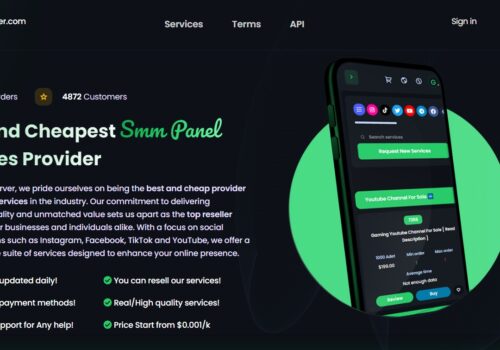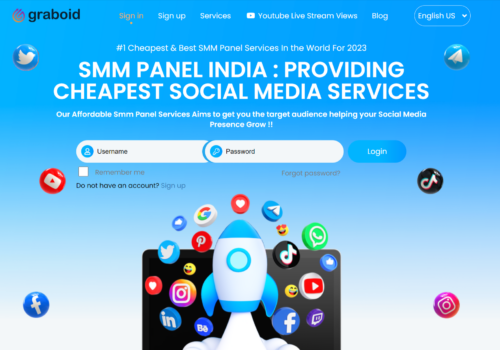It’s no news that Instagram is a tremendous marketing tool.
But something that also falls under the category of marketing, but is often forgotten in the conversation is customer service.
Because it is so much cheaper to keep an existing customer and make them into returning customers, brands shouldn’t just focus on acquiring new customers in order to grow their revenue, but they need to put great focus into managing the customers they already have.
How you deal with disgruntled customers is an important part of that.
The way people reach out to brands for customer service is quickly changing. For a long period of time, people have been using email and phone as their main means of communication, but now, we’re seeing a shift in the customer service space where many customers are now contacting brands through social media instead.
And it’s not so strange, really, if you think about it.
Who wants to sit in a phone line with 13234 people in front of you, and who want to log into their email, compile a message, and then wait hours and hours for a response?
I know I don’t.
Today, there are people using social media than ever before, and the people who are on there also spends more time than ever.
As a result, social media has become the main means of communication for a lot of people. And when it is, the natural choice for people is to communicate with brands through it, just like they communicate with everyone else.
As more and more people take their customer service questions to social media, brands need to be prepared for it and be ready to respond in the best way possible. This especially emphasizes having a clear strategy for how you’re going to deal with disgruntled customers.
Because disgruntled customers are on the edge of leaving you, but they care too much about your brand to leave you. So they contact you in hopes of getting help. But if they don’t they have no other option.
And considering the fact that it is 6 to 7 times more expensive to acquire a new customer than it is to keep a current one, you can’t afford to ignore your disgruntled customers. The best part is that since they take the time to write to you, there’s still a chance for you to get them back, and convert them into loyal supporters of your brand.
But you’re only able to do so if you know exactly how you’re going to deal with them.
With Instagram now having reached 800 million total active users, a natural place for your customers to reach out to you will be through that particular platform. Therefore, it is crucial that you have a standalone strategy for how you’re going to deal with disgruntled customers on Instagram, so you can increase your chances of getting them back.
In this post, I am sharing with you my most effective ways to convert disgruntled customers into loyal supporters on Instagram.
How To Turn Angry Customers Into Fans On Instagram
Never ignore a single message
I’ve seen this too many times on Instagram. And every time I see brands not responding to their customer complaints on Instagram, I drop a tear, because I know how much it is hurting them.
Unfortunately, 80 percent of customer inquiries on social media go unanswered.
Ouch.
That’s especially shocking news considering the fact that 88 percent of consumers are less likely to purchase from a company that doesn’t respond to their questions on social media.
What’s even more shocking is that 30 percent will go to a competitor if you don’t respond to them.
Image Credit: sproutsocial
Safe to say, if you aren’t responding to your customers on Instagram, you’re missing out on tremendous opportunities.
And moreover, you’re missing out on customers. Customers that were expensive to acquire.
The good news, however, is that 65 percent feel greater brand loyalty when you respond to them on social media.
This proves the importance of simply responding to your customers.
Believe it or not, but it can be better to respond with a bad response, rather than not respond at all, because when you don’t, you send a signal to your customer that you just don’t care about them, and that they don’t mean anything to you.
Therefore, this is the place you want to start.
The most obvious place to start is the comment section of your Instagram posts because this is the place where most people will write to you.
Look through each and every one of your posts and see if there are any customer service questions that need answering. If you go to some of the industry giants and look at their posts, you’ll see tons of customer service questions, many of which come from disgruntled customers, and very few of those have received a response. And to me, that’s staggering. It’s 2018, and brands with multimillion-dollar marketing budgets haven’t understood the importance of customer service on social media.
But on the flip side, that gives you a great opportunity to gain traction on Instagram and ultimately steal customers from the industry giant competitors.
When looking through your comment sections, remember that people can leave messages on your old posts, not just your most recent ones.
A few times a week, I go through the latest 20 posts that I have shared, and every now and then, I find messages from customers who have left messages that need answering. And doing so probably saves me from lost customers, too.
The best part about this is that according to a study by Bain & Company, customers who have their questions answered on social media end up spending 20 to 40 percent more money with that brand. Which, if you think about it, is not that strange at all, because if you don’t respond, you show them that you don’t care about them – so why should they care about you?
When you’ve looked through your comment section, you can’t forget the most important place where a lot of people will reach out to you from – Instagram Direct Message. Because Direct Messages allows people to reach out to you more privately, this is a feature on Instagram that a lot of people will use for customer service.
Lastly, in order to identify any disgruntled customers, you need to develop a social listening strategy. Because the truth is, if you aren’t actively looking for any messages that your customers are writing to your brand – directly or indirectly, you won’t find them.
A way you can find more messages from your customers is to search for your own branded hashtag on Instagram. If people are sharing a post where they are talking about your brand, and are then tagging it with your branded hashtag, you can find that post and respond to it accordingly.
The most obvious thing you should do is also to keep an eye on your Instagram notifications. That way, if anyone tags you in their post, where they talk about their brand experience, you can find it, and help them out.
Remember that if you solve a disgruntled customer’s problem, and win them back, they will talk to 10 people about how awesome you are. On the flip side, unhappy customers will talk
to 5 of their friends about their experience. This means that the fruit is so much greater if you can convert an angry customer to a happy customer again.
Understand the complaint
When brands receive customer complaints, a lot of them are terrified and act in desperation.
That’s because they realize that the complaint is out for the world to see.
And when it comes to social media, all publicity isn’t good publicity.
The thing is, all messages aren’t worth a response.
But you can only decide that if you read their message carefully.
Therefore, it is tremendously important that you carefully read the complaint and make sure that you’ve actually understood what your customer is saying.
From there, you can ask yourself ”is this an actual complaint with real substance, or is it just another troll that wants to spread negativity?”.
This does not, however, mean that you should write off every single complaint that you receive as negativity.
This is why my personal rule of thumb is to respond to everyone, no matter if they are trolls or not, and that is because I realize the damage that can be done if I ignore a message that actually came from a real customer who had faced a real problem.
Respond quickly
Time is everything when it comes to social media.
I cannot tell you how many customer service interactions I have had with angry customers that have been amazed by the fact that I’ve responded to them within a matter of minutes, offering my help.
Something as simple as responding to them quickly can alone convert an angry customer into a happy customer again.
In being able to do this, you need to make sure that you have enough resources.
A study from Sprout social found that people expect a response within four hours on social media. But the sad news is that the majority of brands respond within an average of ten hours. The worst part is that an angry customer just gets angrier the longer they have to wait, and by the time you respond to them after ten hours, it might be too late. Plus, an angry customer can spread a whole lot of negativity, and tell a lot of their friends about their negative experience with your brand in ten hours.
Your customer doesn’t care if it is in the middle of the night in your timezone or if it’s the weekend. They want a response and they want it now.
I understand that it is a lot to ask, but if you are able to be available at all times, you’ll be rewarded for it.
According to Convince & Convert, 32 percent of social media users who contact a brand expect a response within 30 minutes, and 42 percent a response within 60.
This might sound a bit demanding, but as the speed of communication ramps up, even more, you can expect this timespan to get even shorter.
Speak like a human
From the customer’s point of view, there’s nothing more annoying than getting a canned response that seems like it was written by a robot, such as ”We’re unable to answer your question. Please call us to speak to a representative from our team and they might be able to help you”
When we get in touch with brands for customer service, we want to talk to other humans with feelings.
And even if you don’t use robots for your customer service process, sending canned messages that seem like they have been written by a robot can be damaging, too.
When you respond to your disgruntled customers on Instagram, it is crucial that you put yourself in their shoes and show empathy.
Something as simple as including your name can do a lot to the conversation.
Moreover, if people see an image of the person they are talking to, and get to know their name, the conversation becomes a lot more concrete. There’s a huge difference between talking to a faceless brand and talking to Jens, the customer service manager who is only trying to do his job, right?
What normally happens when you humanize your responses is that the disgruntled customer calms down. It’s not your fault that they have a problem with the brand, and most people realize that. A lot of the time, you’ll even get an apology if they have been rude to you.
While the conversation is taking place on Instagram you should never forget about the importance of having a human tone to the conversation. Because your end goal is to build relationships with your customers – no matter if they’re angry or not, because relationships lead to loyalty, which in turn lead to return customers. But relationships can only be built through genuine human interactions.
According to Helpscout, employees only ask for the name of the customer 21% of the time. but by speaking to your customer by their name, you can make the conversation one notch more personal. And remember, your customer has a name 100% of the time. This is highly relevant, as 40% of customers said they want better human service.
Speak in the customer’s language
Now that you’ve cut out the canned robotic tone to your responses, it is time to take it one step further and adapt your tone to the customer you’re talking to.
Relationships are built between humans through genuine conversations, and a way to make the customer resonate even better with your brand is to talk to a person using a similar language as them.
Obviously, you’ll have an easier time resonating with someone who is talking in the same language as you, compared to if you’re talking to a 70-year old who uses old words that you cannot comprehend, right?
Different languages create a distance between individuals, but using similar language as the person you are talking to does the opposite – bring you closer to your customer.
It is important, however, that when you are doing this, that the voice you use aligns with your brand’s personality and brand voice. But small changes to your language can be done to your voice to make the conversation with your disgruntled more personal. Just don’t go overboard.
If your customer uses emojis, do so, too! If your customer uses slang that you know the meaning of, you can do so as well. This will help make the conversation more casual and ultimately lead to the disgruntled customer becoming more positive to your brand.
Quick Links:
-
[Latest] How To Make Money Through Instagram 2025 (200% ROI)
-
SocialCaptain Review 2025 Pros & Cons: Instagram Growth Services
-
8 Useful Tricks For Making Yourself A Powerful Instagram Brand
-
Combin Review: Get Instagram Followers Safely & Organically
-
Top Ways You Can Promote Your Company Through Instagram
Apologize – and do it properly
An important part of converting a disgruntled customer into loyal support of your brand is admitting that you were in the right.
The worst thing you can do is start arguing with your customer, or blaming something else because that never leads to anything positive.
Everyone makes mistakes, your angry customer knows that too. The important part is how you make things right again.
When you are going to apologize, you need to make sure that you do it properly, though.
Don’t give your customer some wishy-washy apology and bad excuses. If you give your customer a direct apology, they’ll respect you for it.
Remember why they’re complaining
When brands receive complaints on social media, they get terrified because of the fact that the complaint is available for the world to see.
The world part is that some brands go into defense mode, and see everyone who is complaining as a threat to their brand who only want to hurt them.
But that it just not true.
Because the truth is, 91% of your disgruntled customers will leave you without saying a word, and only 4 percent of your customers will complain.
This is why you need to value the customers who are complaining preciously because chances are, there are far more people who are having the same issues.
They’re just not telling you about it.











